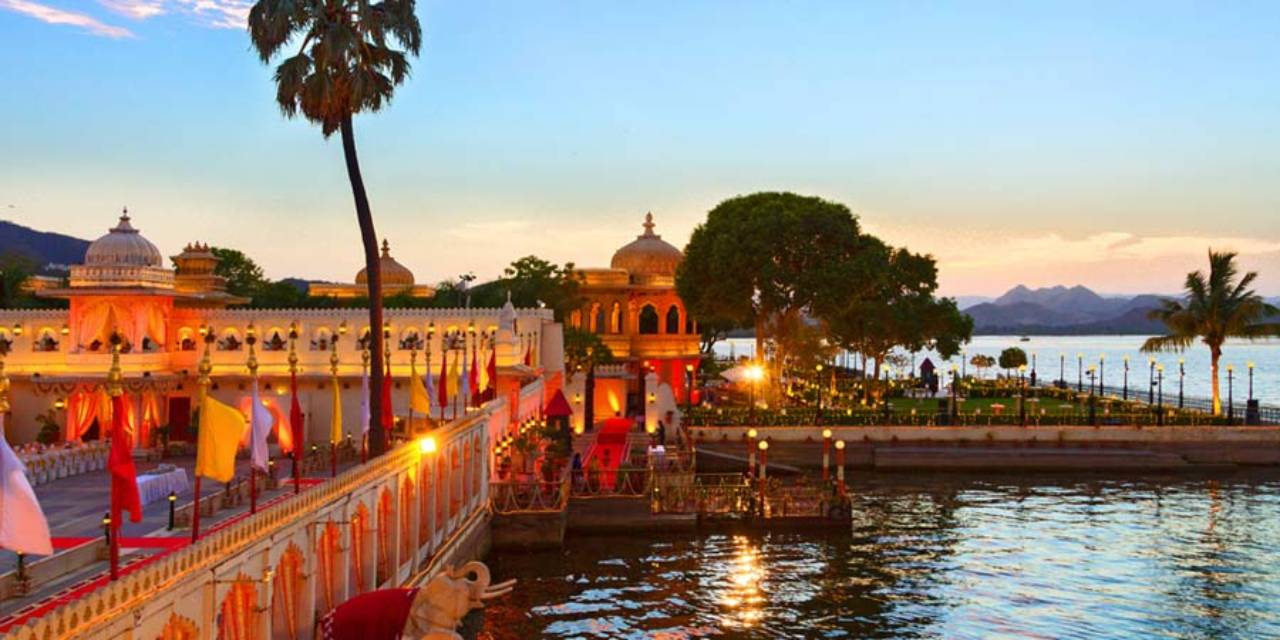
Entry Fees :- No Entry Fees
Timing :- 10:00 am – 6:00 pm
Year of Establishment :- 1620–1628 Century
Best Time To Visit :- October to February
History
The Mewar kingdom faced a significant threat from the Marathas, which nearly decimated it for many years. However, hope for survival arose in 1817 when the British intervened with the "Treaty of Paramountcy," pledging to restore all hereditary territories and protect the state from future invasions. This marked a turning point, ushering in an era of peace and prosperity for Mewar Kingdom, restoring the pride and glory of the Sisodia Rajputs.
During the 1857 revolt, Maharana Swroop Singh (1842–1861) provided refuge to numerous European families, primarily women and children from Neemuch, in the Jag Mandir Palace. This revolt, known as the Sepoy Mutiny or Indian Mutiny, was a significant uprising against British rule, often referred to as the first War of Independence.
Following India's independence from British rule on August 15, 1947, Maharana Bhupal Singh took the initiative to merge the Mewar kingdom with the Indian union in 1949, along with other princely states of Rajasthan.
Activities Nearby
- The Jagmandir Island Palace By Hrh Group Of Hotels Udaipur is about 500 metres from the lovely Lake Pichola.
- One of the well-known tourist attractions of the city is the 2.3 km distant Jagdish Temple.
- Pita Shree Handicraft (1.8 km) and the City Palace of Udaipur are a couple of the additional sites in the area. (700 m).
Structures within
Gul Mahal:- Gul Mahal, the first structure erected in 1551 during Maharana Amar Singh's reign, underwent further development under Maharana Jagat Singh to accommodate the Mughal Prince Khurram. Originally a small sandstone palace with an impressive dome resembling a crown, it featured the crescent of Islam atop the dome. The palace comprised three circular domed chambers stacked atop each other, accessed through a columned hall. Above the main façade rose two marble chhatris with sloping cornices. The interior walls were adorned with massive marble slabs inlaid with colored rubies, onyx, jasper, cornelian, and jade, a decorative style later replicated by the Mughals in their Tomb of I'timād-ud-Daulah at Agra in 1626. The palace reportedly housed a throne crafted from a single block of serpentine, although its whereabouts remain unknown. Surrounding the Mahal is a spacious circular apartment constructed from white and black marble, adorned with murals and paintings—an unusual feature in Rajput architecture. Three additional pavilions with similar designs are found on the western wing of the palace.
Jag Mandir:- Jag Mandir serves as the primary palace, housing the Gul Mahal within its complex. The palace features octagonal towers at its corners, topped with cupolas. Inside, a complex network of reception halls, residential suites, and internal courts is intricately designed in both Rajput and Mughal architectural styles. Adjacent to the palace is the Zenana, which comprises the chambers for the residence of royal ladies. The Kunwar Pada ka Mahal, also known as the Palace of the Crown Prince, is situated at the western end of the complex.
Entry pavilion:- The entry pavilion to the palace impresses with its grand white colonnade of cusped arches. A landing jetty is strategically positioned for the docking of boats arriving from the Bansi Ghat jetty on the mainland near City Palace in Udaipur, allowing for cruises across the picturesque Pichola Lake. Adorned with large stone-carved elephants, four on each side of the entry steps, the pavilion overlooks the Lake Palace. While the trunks of these elephants were damaged and replaced with polystyrene, the pavilion itself serves as a picturesque marker of the island's perimeter against the scenic backdrop of the Aravalli hills.
Garden:- The flower garden within the palace complex is situated in the expansive Garden Courtyard. It boasts a variety of flora, including yew bushes, jasmine, frangipani trees, bougainvillea, palm trees, nasturtiums, verbena, and moss rose. The courtyard is paved with black and white tiles, and its surroundings feature fountains, water pools, and crisscrossing walkways adorned with low marble handrails. Today, the current Maharana hosts lavish parties in this picturesque setting and also rents out the space for private events.
Darikhana :- Darikhana, located on the northern side of the palace, is an open-sided terrace constructed with marble columns. Currently, the area operates as a restaurant under the management of the present Maharana.
